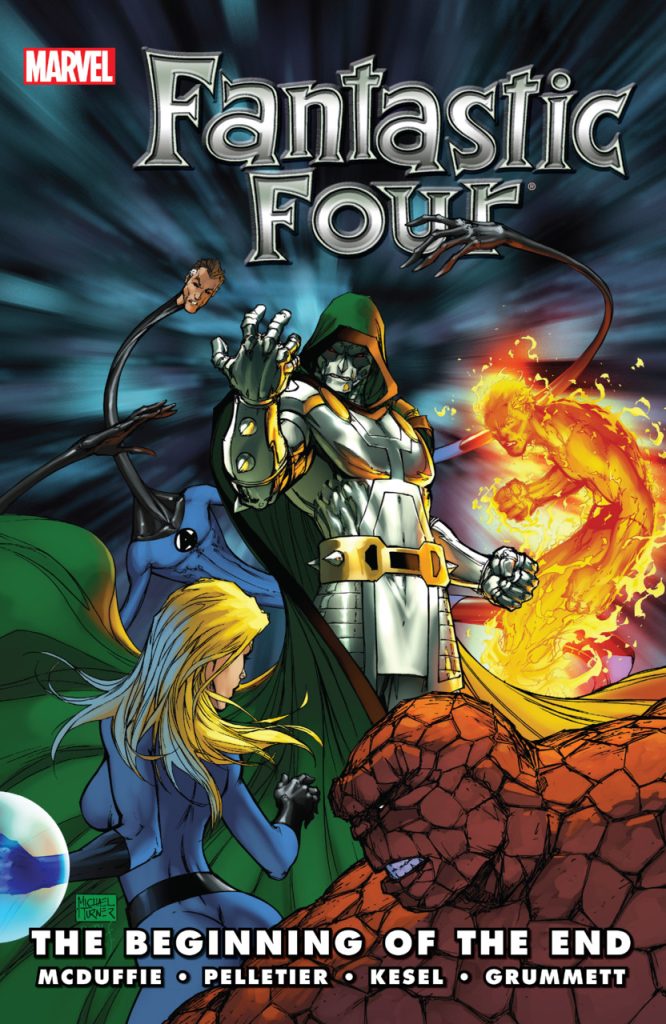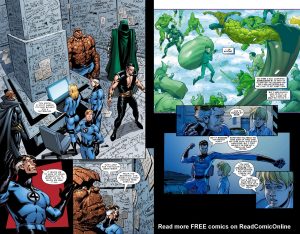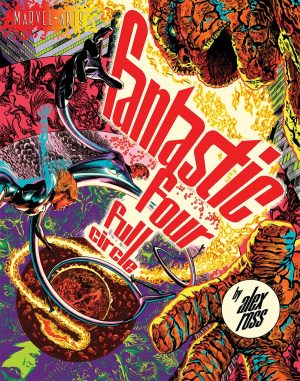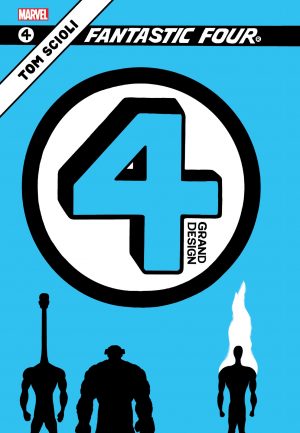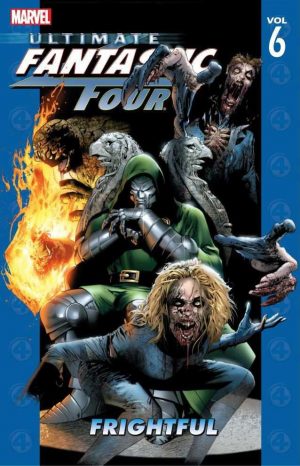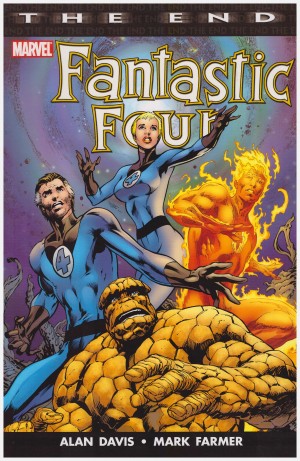Review by Frank Plowright
The Beginning of the End starts with the status quo restored for the Fantastic Four. Mr. Fantastic and Invisible Woman are back on board, after an initial absence in The New Fantastic Four, and Dr. Doom is lurking in the wings.
This is a compromised collection paving the way for Mark Millar taking over Fantastic Four with World’s Greatest. It features the final three chapter story of Dwayne McDuffie and Paul Pelletier’s one year of guiding the title, and as that wouldn’t be a collection on its own, Marvel dip back earlier in the run for what was then a couple of fill-in issues by Karl Kesel and Tom Grummett.
McDuffie faces the same problem with Dr. Doom as he did with Galactus before, in that so many earlier stories have featured them it’s difficult to come up with something original. Well, he does, relatively speaking, by constructing a story around whether or not Doom can be believed. It’s a smart exploitation of what Reed Richards did during the then recent Civil War, and hangs together logically enough, but it’s clever rather than enthralling and requires way too much explanation. However, Jonathan Hickman would later pick up on some of what’s included for his Fantastic Four. A treat within, though, is some absolutely spectacular action art from Pelletier as the Thing decides he’s had enough of Doom.
Grummett’s version FF is slimmed down, but he draws an interestingly craggy Thing and puts a lot of effort into background detail. Kesel’s story also amounts to whether or not a villain can be trusted, in this case Diablo. He doesn’t help his case by offhand comments about the place of women in the era several hundred years earlier when he was born, and is very prone to talking to himself. Over only two chapters and a need to incorporate strange dreams, it lacks the tension of the opening story, and the revelations aren’t as strong either. Ending with some unconvincing psychoanalysis of Johnny Storm seals the secondary status.
This isn’t a poor collection, but lacks the spark, fun and energy of the previous volume. Thankfully Millar restores that.
